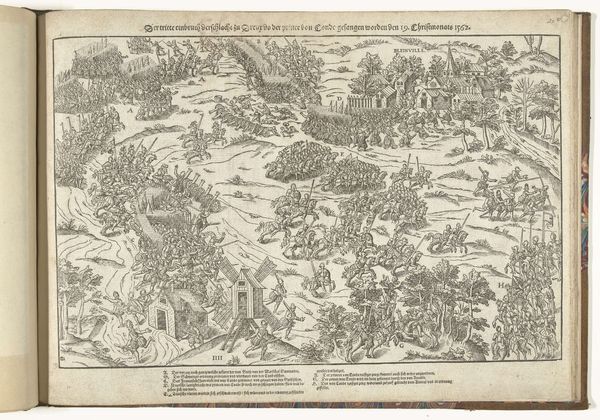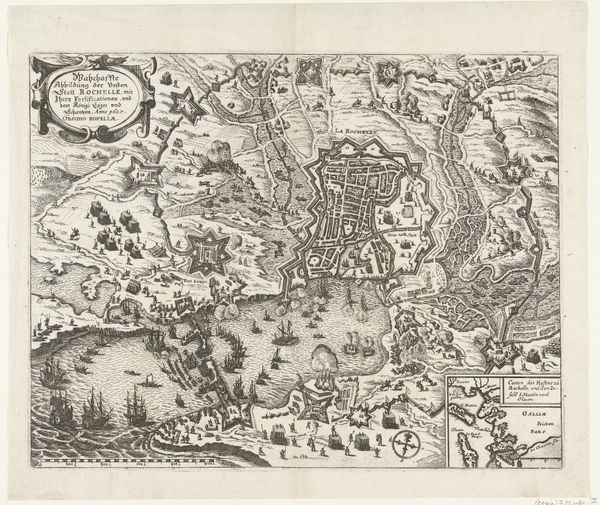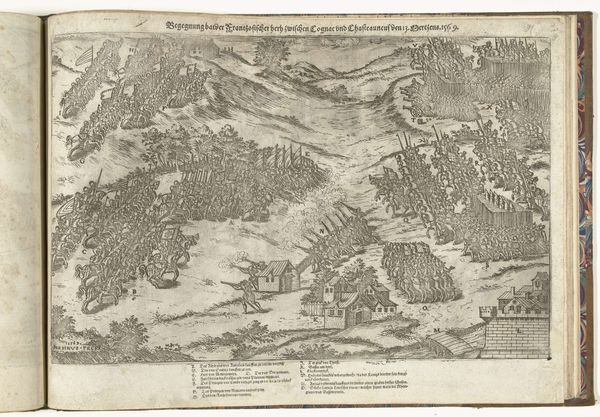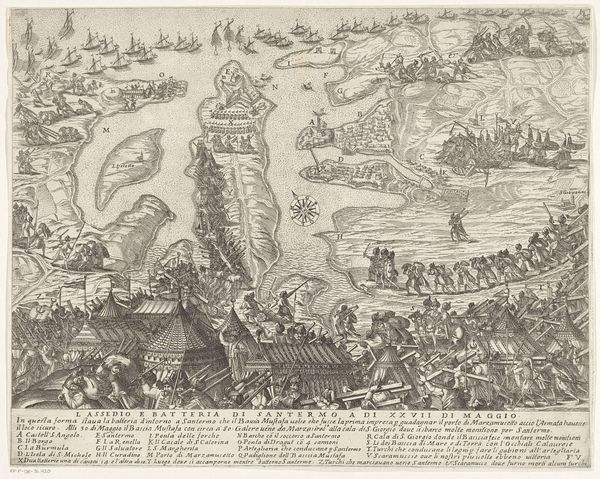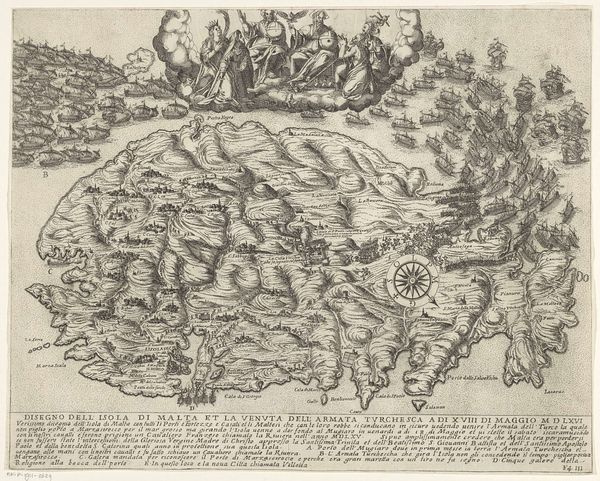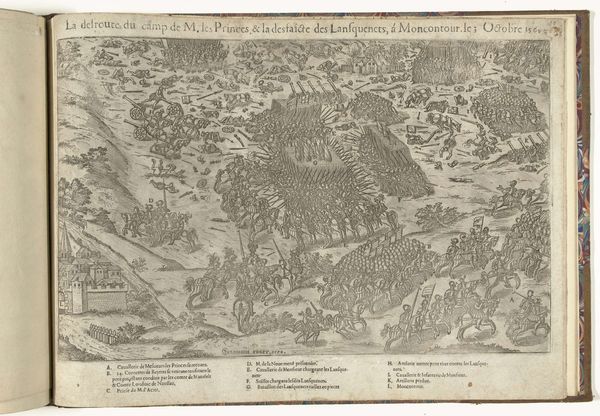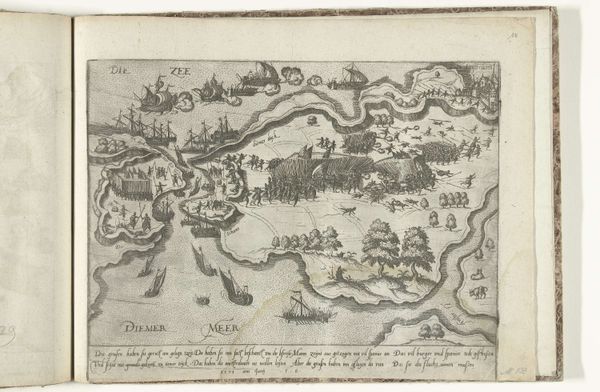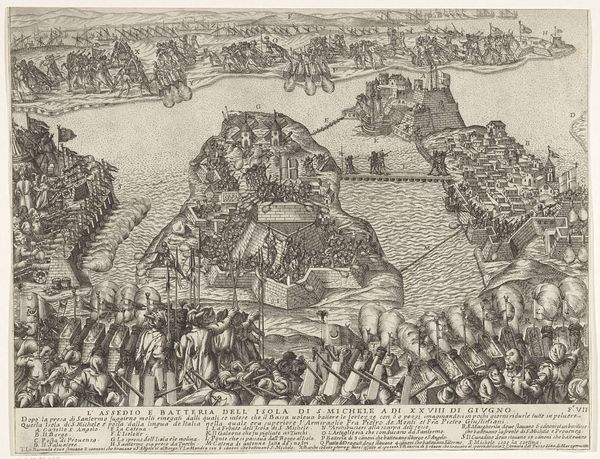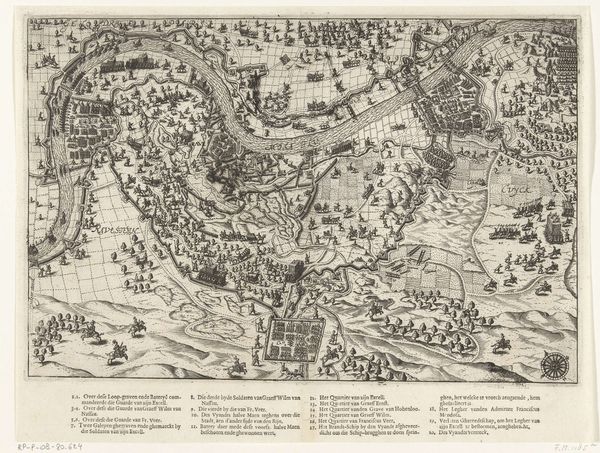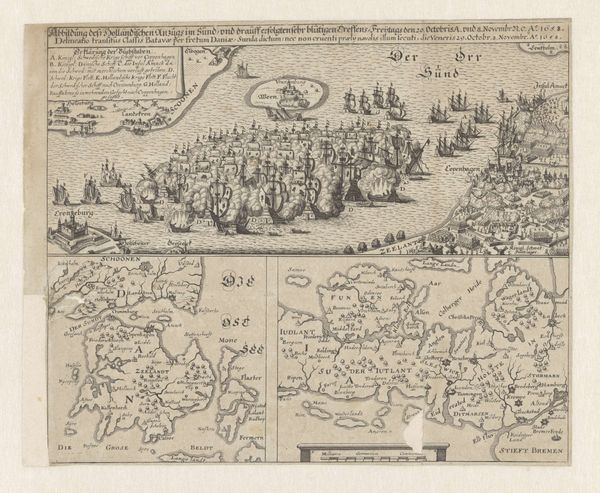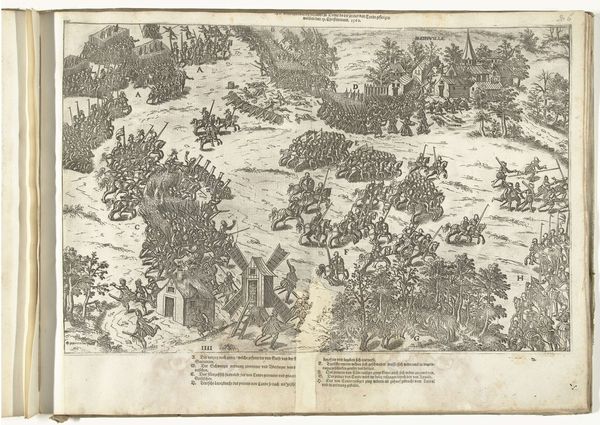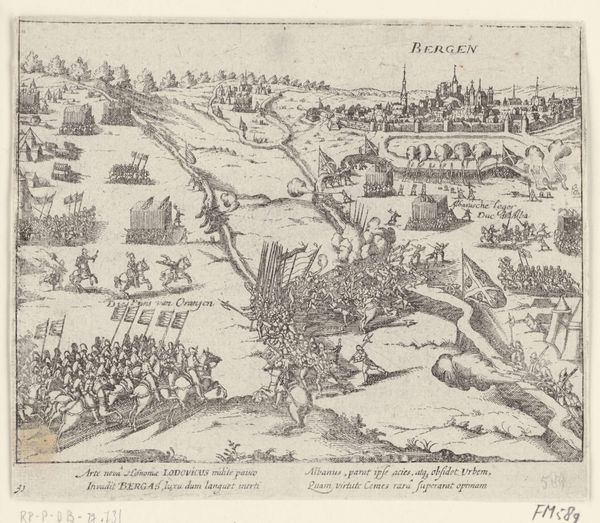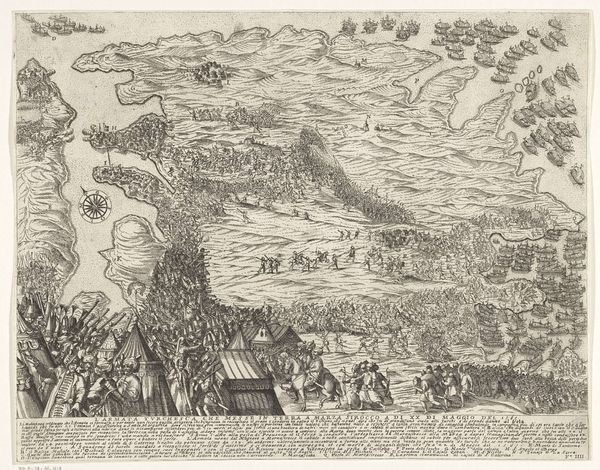
print, engraving
#
baroque
#
pen drawing
# print
#
landscape
#
11_renaissance
#
cityscape
#
history-painting
#
engraving
Dimensions: height 340 mm, width 437 mm
Copyright: Rijks Museum: Open Domain
Curator: Today, we’re looking at "Overzicht van het gehele gevecht op Malta," or "Overview of the Entire Battle on Malta," a print created in 1665 by Antonio Francesco Lucini. It depicts a detailed aerial view of a conflict, seemingly unfolding in real-time. What are your initial impressions? Editor: It's an unsettling panorama. The sheer volume of human activity, rendered with such fine lines, evokes a sense of relentless, industrious energy. The print material itself seems almost clinical in its detachment, distancing us from the violence it portrays. Curator: The formal construction is intriguing, isn't it? Notice how the composition pulls the eye across the island, engaging different perspectival framings to simulate breadth, depth and the dizzying nature of the theater of battle. The topographical lines act as contours, charting not just landscape but conflict. Editor: Yes, the landscape itself is essentially weaponized. Consider the act of engraving. Lucini painstakingly carves the lines, almost mimicking the brutal act of shaping the environment, of constructing trenches and defenses for war. The material suggests how labor and land have been changed by military production. Curator: Precisely! The strategic placement of elements draws one's eyes across the landscape. Look at the opposing formations, carefully arranged along the water’s edge. A play of lines create geometric tension, representing a larger philosophical discord—the structure mimics its thematic counterpart. Editor: That intentional discord brings forth the consumption involved. This print would likely be reproduced and circulated widely, functioning as a form of visual propaganda. We should also consider the economic implications; who commissions the work and the access of materials given wartime shortages? Curator: Absolutely, considering all its historical implications, the visual language achieves a sophisticated form. It functions as an event diorama. The stark visual choices and composition result in its communicative function of Baroque-era historicism. Editor: Well, examining the processes behind the image grants valuable insight into how warfare infiltrates both artmaking and our understanding of value beyond the purely aesthetic experience. Curator: Yes, by integrating diverse analytical methods, we broaden our view of both war and art. Editor: Indeed. Each view leaves me to further question the historical narratives involved.
Comments
No comments
Be the first to comment and join the conversation on the ultimate creative platform.
